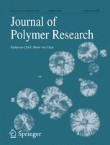
Abstract
The pristine polycarbazole (PCz) and polycarbazole (PCz) -tin oxide (SnO2) nanocomposite (PCT) were synthesized via facile in-situ polymerization method and analyzed by various advanced techniques. The crystal structure is identified by PXRD and disclosed the primitive tetragonal structure of SnO2. The annealed PCT exhibited uniform spherical like morphology with low degree of aggregation. The HRTEM analysis confirmed the presence of nanocomposite with the particle size of 7.6 nm for the annealed PCT. The surface area measured from the BET analysis for the annealed PCT is 7.9 m2/g which is 1.9 and 1.6 times higher than the PCz and unannealed PCT respectively. The TG-DTA study revealed the high thermal stability of the annealed material which is 4.8 times higher than the unannealed. The annealed PCT showed higher photocatalytic activity towards rhodamine B (RhB) and methylene blue (MB) dyes under natural sunlight than t he UV light under same conditions. Besides, it shows excellent photocatalytic stability after 4 cycles. The extent of degradation is investigated by total organic carbon (TOC) analysis and found that the removal percentage towards the RhB and MB dyes under natural sunlight were 74.16 and 88.16% which is 1.7 and 1.5 times higher than the UV light under same conditions. The practical feasibility of PCT towards the real life time sample is investigated by chemical oxygen demand (COD) technique which is demonstrated a high removal percentage of 50% within 240 min. Thus, the synthesized nanocomposite is inexpensive, reliable and efficient photocatalyst for the removal of textile dyes.



Δεν υπάρχουν σχόλια:
Δημοσίευση σχολίου